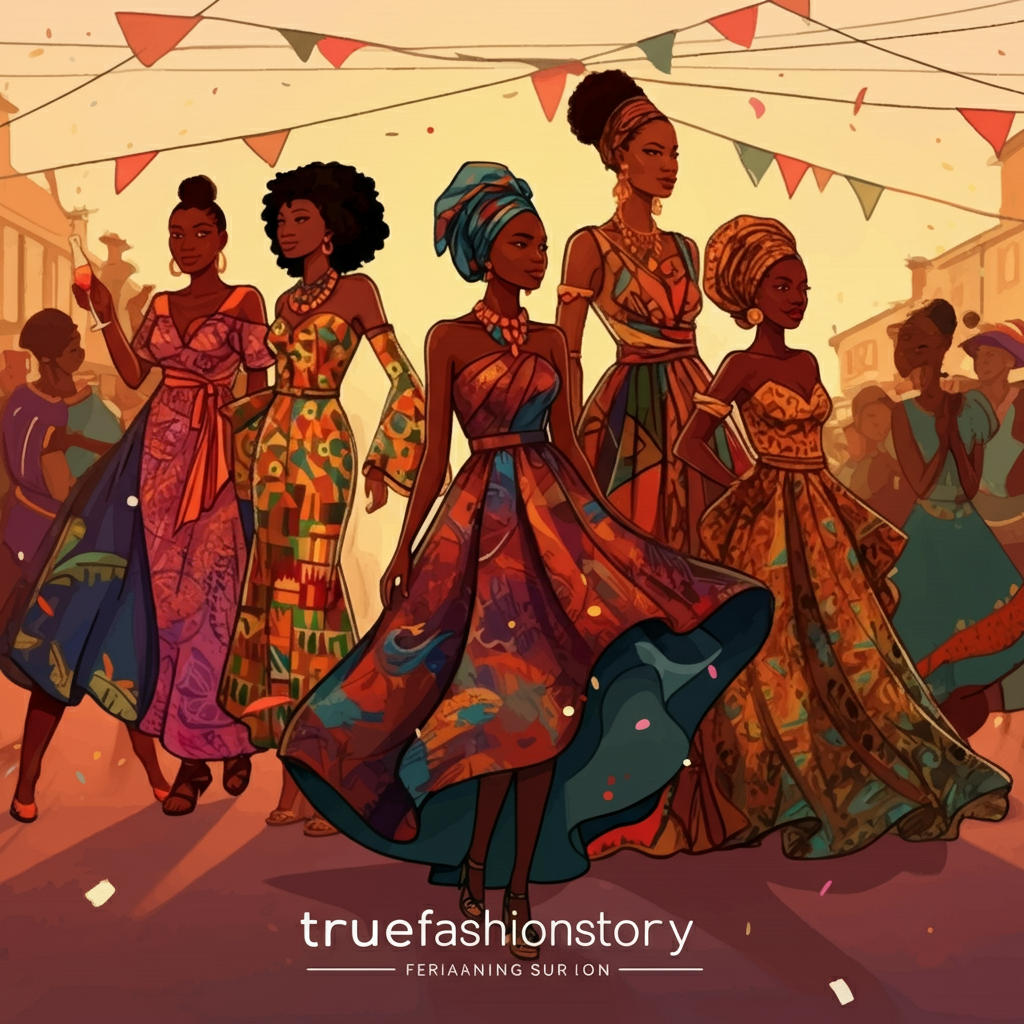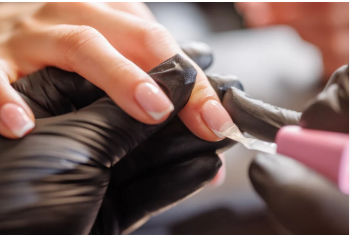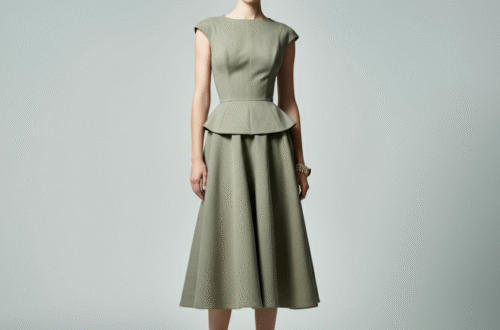African fashion dresses are more than just clothing; they are a vibrant celebration of culture, history, and artistry. Each piece tells a story through its intricate patterns, bold colors, and unique designs. From the bustling markets of Lagos to high-fashion runways in New York, these garments have captured the world’s attention. This guide will explore the beautiful world of African fashion, helping you understand its significance and how to incorporate these stunning pieces into your own wardrobe. We will look into different styles, fabrics, and the designers who are bringing this rich heritage to the global stage.
Key Takeaways
- African fashion is diverse, with each region and country offering unique styles and fabrics.
- Fabrics like Ankara, Kente, and Mudcloth are central to African dressmaking, each with its own history and meaning.
- Modern African fashion blends traditional elements with contemporary silhouettes, making it wearable for any occasion.
- Supporting authentic African designers and brands helps preserve cultural heritage and promotes ethical fashion.
- Styling African fashion dresses is easy; they can be dressed up with heels or down with sneakers for a versatile look.
The Rich History Woven into African Textiles
The story of African fashion dresses begins with the textiles. Long before they are cut and sewn, these fabrics carry deep cultural and historical significance. The methods of creating them have been passed down through generations, with each pattern and color holding a specific meaning.
Understanding Ankara Fabric
Often called “African wax print,” Ankara is perhaps the most recognized African textile. Its origins are surprisingly complex, with Indonesian batik techniques being introduced to West Africa by Dutch merchants in the 19th century. African artisans and consumers adopted these prints, infusing them with local colors, motifs, and stories. Today, Ankara is a staple in African fashion, known for its vibrant, computer-generated designs on 100% cotton. It’s used to create everything from flowing maxi dresses to sharp, tailored suits.
The Royal Cloth: Kente
Originating from the Ashanti people of Ghana, Kente cloth is a symbol of royalty, prestige, and cultural sophistication. Traditionally woven by hand in long, narrow strips that are then sewn together, authentic Kente is a work of art. Each color has a meaning: gold for wealth, green for growth, and black for spiritual strength. While real Kente is expensive and reserved for special occasions, its patterns are often printed on other fabrics to make it more accessible for everyday African fashion dresses.
The Earthy Appeal of Mudcloth (Bògòlanfini)
Mudcloth, or Bògòlanfini, comes from Mali and is a handmade cotton fabric dyed using fermented mud. The process is painstaking and entirely natural. Artisans paint intricate geometric patterns onto the cloth, with each symbol telling a story or conveying a proverb. The earthy tones of black, white, and brown give Mudcloth a unique, rustic appeal that is increasingly popular in both fashion and home decor.
Popular Styles of African Fashion Dresses
The diversity of the African continent is reflected in its fashion. From breezy caftans to form-fitting mermaid gowns, there is an African dress for every body type and occasion.
The Effortless Caftan (Kaftan)
The caftan is a loose-fitting, flowing robe that is popular across Africa and the Middle East. It is celebrated for its comfort and elegance. African caftans are often made from lightweight fabrics like silk, cotton, or chiffon and may be adorned with elaborate embroidery around the neckline and cuffs. They are perfect for warm weather, beach vacations, or simply lounging in style at home.
The Classic Dashiki Dress
The Dashiki is a loose-fitting tunic or dress characterized by an ornate V-shaped neckline. Originating in West Africa, it became a symbol of Black pride and identity in the United States during the 1960s. Modern Dashiki dresses come in various lengths and styles, made from colorful printed fabrics that make a bold statement.
The Elegant Mermaid Gown
For formal events like weddings and galas, the mermaid or fishtail gown is a go-to choice. This style is fitted through the bodice and hips before flaring out at the knee, creating a dramatic and feminine silhouette. When crafted from luxurious African textiles like lace-adorned Ankara or shimmering Aso-Ebi fabrics, these gowns are truly breathtaking.
Modern Interpretations and Global Influence
African fashion is no longer confined to the continent. Designers are creatively blending traditional aesthetics with modern trends, creating pieces that appeal to a global audience. This fusion is what makes contemporary African fashion dresses so exciting.
African Prints on Contemporary Silhouettes
Today’s designers are using classic African prints on modern silhouettes like peplum tops, jumpsuits, and A-line skirts. This makes the patterns accessible and easy to integrate into a Western wardrobe. You might find an Ankara print on a structured blazer or a Kente pattern on a pair of wide-leg trousers. This blend of old and new allows you to celebrate African heritage in a fresh, stylish way. You can discover more about these evolving trends on platforms like the truefashionstory.comBlog.
The Rise of African Designers
A new generation of African designers is making waves on the international fashion scene. Names like Duro Olowu, Lisa Folawiyo, and Deola Sagoe are regulars at major fashion weeks, dressing celebrities and showcasing their collections worldwide. These designers are not just creating beautiful clothes; they are changing the narrative about Africa, presenting it as a hub of creativity, innovation, and luxury. Supporting their brands is a great way to invest in authentic, high-quality fashion.
How to Style Your African Fashion Dresses
Incorporating African fashion dresses into your wardrobe is simpler than you might think. The key is to let the dress be the star of the show.
For a Casual Look
- Keep accessories minimal: A bold print dress doesn’t need much embellishment. Opt for simple jewelry like stud earrings or a delicate bracelet.
- Choose comfortable footwear: Pair a short Ankara dress with clean white sneakers or flat sandals for a relaxed, daytime look.
- Add a denim jacket: A classic denim jacket can tone down the vibrancy of a print, making it perfect for a casual outing.
For a Formal Occasion
- Elevate with heels: A pair of elegant heels, whether stilettos or block heels, will instantly dress up your outfit.
- Select a statement accessory: Choose one standout piece, like a metallic clutch or bold earrings, to complement your dress.
- Focus on fit: For formal wear, ensure your dress is well-tailored. A perfectly fitted mermaid gown or a structured maxi dress looks polished and sophisticated.
Fabric Comparison: Ankara vs. Kente vs. Mudcloth
|
Feature |
Ankara (Wax Print) |
Kente |
Mudcloth (Bògòlanfini) |
|---|---|---|---|
|
Origin |
West Africa (via Indonesia/Europe) |
Ghana (Ashanti People) |
Mali (Bambara People) |
|
Material |
100% Cotton |
Silk and Cotton |
Handspun Cotton |
|
Production |
Machine-printed (wax-resist) |
Handwoven in strips |
Handmade, dyed with fermented mud |
|
Appearance |
Vibrant, colorful, intricate patterns |
Geometric patterns, bright colors |
Earthy tones, symbolic patterns |
|
Common Use |
Everyday dresses, skirts, shirts |
Ceremonial wear, special occasions |
Dresses, wall hangings, home decor |
Caring for Your African Garments
To keep your African fashion dresses looking beautiful for years to come, proper care is essential. Since many are made from 100% cotton or delicate handmade materials, they require a bit of extra attention.
- Read the Label: Always check for a care label first. Many modern designers include them.
- Hand Wash or Gentle Cycle: For most cotton Ankara fabrics, it’s best to hand wash in cold water or use the gentle cycle on your washing machine.
- Use a Mild Detergent: Harsh detergents can cause the vibrant colors to fade.
- Avoid the Dryer: High heat can shrink or damage the fabric. Always hang your garments to air dry, preferably out of direct sunlight to prevent fading.
- Dry Clean Special Fabrics: For delicate materials like silk Kente or handmade Mudcloth, professional dry cleaning is the safest option.
Conclusion
African fashion dresses offer a world of color, culture, and style. They are a powerful form of self-expression, connecting the wearer to a rich heritage of artistry and tradition. Whether you prefer the bold energy of an Ankara print, the royal elegance of Kente, or the earthy spirit of Mudcloth, there is a design that will speak to you. By embracing these beautiful garments, you not only enhance your personal style but also support a global community of designers and artisans who are keeping these traditions alive. Start exploring and find the perfect African dress to add to your collection today.
Frequently Asked Questions (FAQ)
1. Can anyone wear African fashion dresses?
Absolutely! African fashion is for everyone. Wearing these garments is seen as an appreciation of the culture, especially when purchased from authentic African designers or brands. It’s about celebrating the beauty and artistry of the continent.
2. Are African dresses only for special occasions?
Not at all. While some elaborate styles like Aso-Ebi are reserved for events, there are countless casual styles perfect for everyday wear. Simple shift dresses, wrap dresses, and tunics made from Ankara fabric are great for work, weekends, and everything in between.
3. Where can I buy authentic African fashion dresses?
Look for online marketplaces that feature African designers, or search for specific brands based in Africa or owned by members of the diaspora. Many designers now ship worldwide. Visiting cultural festivals or local markets with African vendors is another great way to find authentic pieces.
4. What is Aso-Ebi?
Aso-Ebi is a Yoruba term that means “family cloth.” It refers to a tradition where family members and friends wear matching fabrics for a special event, like a wedding or funeral, to show unity and support. The fabrics are often lace, velvet, or high-quality Ankara.





